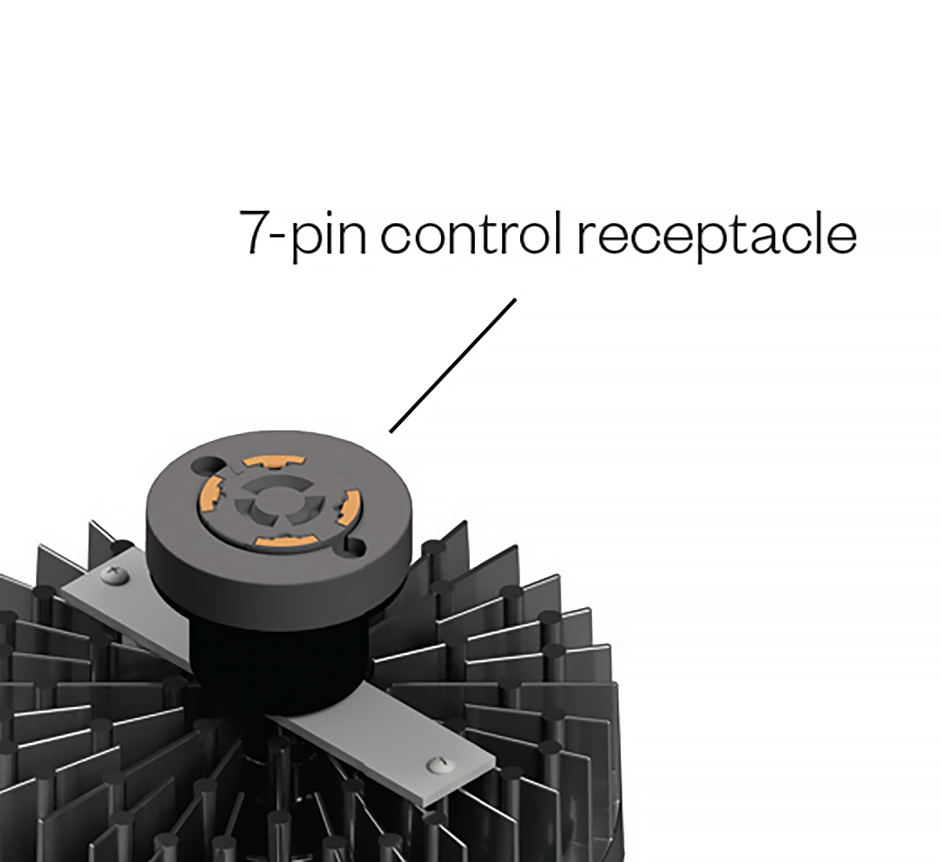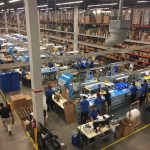Smart Sites: The Next Wave in Facility Management
Amerlux Brings Smart City Technology to Your Site
“Smart city” is a loose term for a city or community that uses sensor data to deliver a responsive infrastructure. In a smart city, sensors can monitor everything from energy usage to traffic flow to occupancy. Using wireless connectivity, cities can control and adjust their infrastructure in real-time based on the changing needs of the community.
 Data collection methods can include sensors for energy and water usage, occupancy and crowd size measurement.
Data collection methods can include sensors for energy and water usage, occupancy and crowd size measurement.
You can do the same on a smaller scale for your facility, creating a smart site.
The promise of smart sites is better-managed facilities and lower operating costs through technology.
Some of the world’s wealthiest investors see the potential of smart cities and are partnering with cities around the globe to create smart communities:
- A Google company is investing $50 million into a project to revitalize an industrial neighborhood in Toronto, Canada—something Google is describing as the “world’s first neighborhood built from the internet up.”
- Bill Gates, through an investment company he controls, has put $80 million in a proposed smart city near Phoenix. A greenfield parcel of 24,800 acres, the city is planned to rival Paris in size once completed.
- Saudi Arabia has committed $500 million to a new planned smart megacity—NEOM—which would span 10,230 square miles, which is 33 times the size of New York City.
Lampposts Emerge as the Foundation for Smart Sites
Exterior lighting is a key part of any smart site implementation. Smart facilities are built on networks of sensors across the site and those sensors need wireless communication connectivity, as well as power supplies.
Your exterior lighting is the perfect foundation for your smart site because the lights can provide the power and the pole, which provides a physical platform for the sensor to mount onto. Your street and pedestrian lights double as the backbone of your smart facility, hosting all the sensors and data collectors.

The 7-pin NEMA socket is the key component that creates a wireless “hub” for the smart site. A standard electrical receptacle, it is available as an option on Amerlux lighting products, such as the Avista LED light engine, the Coach Style Lantern fixture, as well as a variety of other control-ready luminaires.
The 7-pin socket is backward compatible with older 3-pin plug sensors for maximum utility, but the real magic is in what that the 7-pin socket enables: the extra pins in the receptacle allow for wireless communication, occupancy sensors, power monitoring and video.
For just a few extra dollars apiece during a lighting upgrade, you can lay the groundwork for your future smart facility, by purchasing lights with the 7-pin option. Buying the 7-pin option up front can save hundreds of thousands of dollars per pole in additional retrofitting costs later.
LEDs last for 50,000-100,000 hours (10-20 years), so it makes sense to maximize future options with the 7-pin receptacle, even if you’re not ready for the full smart facility investment.
The 7-pin socket is the foundation your smart facility plugs into and with it, you can future-proof your LED lighting investment with compatibility to the controls of today and tomorrow.
What You Can Do with Your Smart Site
The hallmark of a smart site is its connectivity. Networks of sensors connecting to each other and to controls (which could be your phone) provide the information you need in real time to optimize your facility for a variety of purposes, including:
Lighting controls
The 7-pin socket allows for an unprecedented level of control over your lighting, including wireless controls, automatic dimming based on occupancy or ambient light levels, monitoring for faults, and GPS so each pole is automatically mapped out.
Cameras
Cameras are great for security and for monitoring other aspects of your facility, such as, use and traffic levels. Cameras are a common smart facility application and lampposts are ideal locations for cameras to mount onto.
Data collection for future investment
Using sensors to count people, bicycles and motor vehicles and their flow through certain areas are common kinds of data collection. With this data, you can optimize your facility for maximum efficiency and increase the value of your facility. For example, if your facility leases space to retail tenants, concrete data about pedestrian flow could justify higher prices per square foot.
Outdoor Wi-Fi
If you need wi-fi outside your building, you can easily leverage your lampposts as the mounting platform and power source for wi-fi access points so your facility is fully connected.
Many of the world’s leading investors and technology companies see smart cities as the way of the future. With the 7-pin socket on your exterior lighting, you too can enjoy the benefits of a smart city in your facility.

